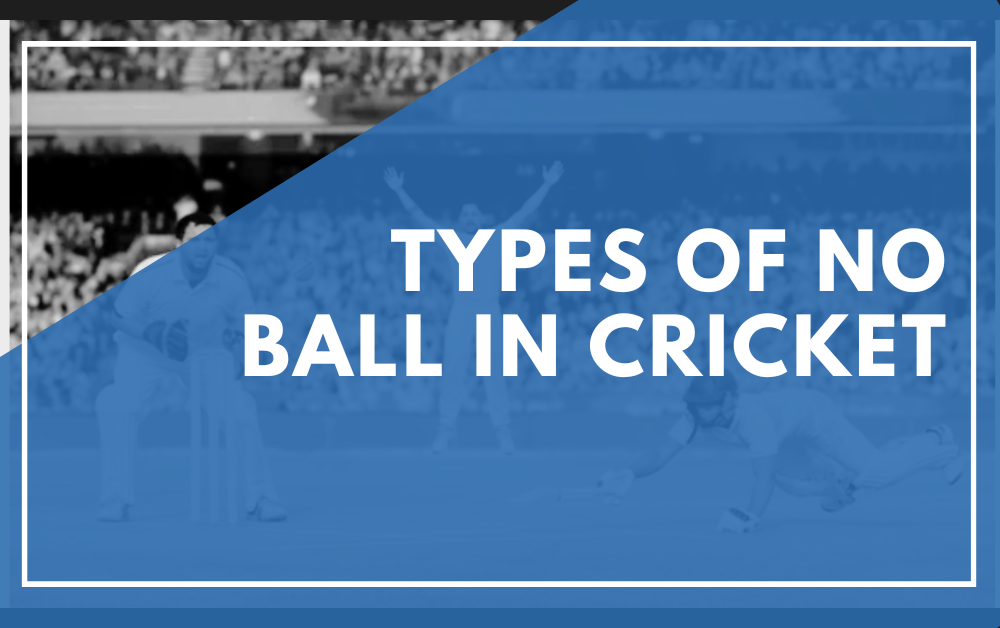Type of No Bowls in Cricket – The Ins and Outs of This Key Rule
Demystifying the no Bowl rule – a core part of the game
The no bowl rule is one of the fundamental laws in the game of cricket. No bowl decisions have a big impact on matches, yet the exact intricacies of the law are not always fully understood by players and fans. This in-depth guide explains all the different types of no bowls, when they are called, the consequences, and how to avoid them. If you want to truly understand this vital component of the sport, read on!
What is a No-Bowl in Cricket?
A no bowl in cricket is a delivery by the bowler that is judged illegal by the umpire. No bowls result in a run being awarded to the batting team, plus the bowl must be re-bowled. So no bowls are penalized as they give unfair advantage to the bowler.
The umpire calls and signals no bowl when the bowler breaks certain rules during their delivery stride and upon releasing the bowl. There are several different types of delivery that can be deemed a no bowl.
Why are No Bowls Important in Cricket?
No bowldecisions may seem technical, but they have a huge influence on cricket matches.
Some key reasons why no bowls matter:
- Concede extra runs – each no bowl gifts the batting team one run. Multiple no bowls can swing tight contests.
- Allows free hits – in limited overs cricket, the next bowl after a no bowl is a ‘free hit’ so the batter cannot be dismissed. This enables batters to score frequent boundaries.
- Resets pressure – a wicket bowl delivered right after a no bowl has no impact as the bowl must be re-bowled. The bowling team immediately loses any pressure built up.
- Alters tactics – teams may stack the leg side field if a bowler is repeatedly overstepping, gifting easy runs. Bowling options must be changed if bowlers keep overstepping.
So while some view no bowls as minor technical breaches, they substantially impact match situations, strategy and outcomes. No team wants to frequently bowl no bowls and lose command of the game.
How Many Types of No Bowl in Cricket?
There are several distinct types of delivery which are classified as no bowls in the laws of cricket:
1. Front Foot No Bowl
If the bowler’s front foot lands beyond the popping crease during delivery stride, it is ruled a no bowl. This is the most common no bowl offense.
2. Return Crease And Back Foot No Bowl
If the bowler’s back foot lands outside the return crease during delivery stride, this is also given no bowl.
3. Bowl Bouncing Multiple Times
If the bowl bounces two or more times before reaching the batter, or rolls along the ground, it is deemed a no bowl.
4. Bowl Above Waist Height
Any delivery which passes the batter above waist height without bouncing is called a no bowl, unless the batter hits it.
5. Bowl Pitching Off the Pitch
If a bowl pitches wholly or partially off the pitch before reaching the batter, it is ruled a no bowl.
6. Fielding Breaches
If fieldsmen encroach inside the fielding exclusion zone before the bowl is hit, a no bowl is called.
So while foot faults are the most frequent no bowl offense, the umpire must watch for several illegal delivery types throughout each over.
7. Bowl Before Delivery
The umpire must watch the bowl closely from the moment the bowler starts their run up to the point where it leaves their hand during delivery. If at any point before the bowler releases the bowl, it slips from their hand and bounces more than two times while running in, this counts as a no bowl. The bowl is not yet officially in play, but multiple bounces show the bowler does not have full command. So the umpire calls no bowl if the bowler drops the bowl in their approach even before the actual delivery stride begins. Careful monitoring from the umpire is essential during the full build-up before the bowl is finally released towards the batter.
When is a No Bowl Called in Cricket?
There is a specific process for no bowl decisions:
- The umpire watches the bowler’s delivery stride and release.
- If they observe an illegal delivery, the umpire calls ‘no bowl’ loudly and signals by extending one arm horizontally.
- The delivery is ruled null and the batter cannot be out stumped, run out, bowled or caught off a no bowl (except for disputing dismissal types like obstructing the field).
- The batter is awarded one run for the no bowl which is added to the team total, plus any additional runs scored.
- The next delivery is designated a ‘free hit’ in white bowl cricket. The bowl must be re-bowled after the no bowl.
So an observant umpire plays a vital role in instantly calling illegal deliveries, before plays continue and runs accrue.
What is a Free Hit in Cricket?
One of the major impacts of a no bowl in modern limited overs cricket is it triggers a ‘free hit’ on the following delivery.
When a free hit is signalled after a no bowl, the striker cannot be dismissed on the next bowl. This allows batters to swing freely without fear the next bowl.
Fielding teams often bowl full tosses or other easy bowls during free hits to limit boundaries. But the free hit still hands a big advantage to the batting team. No bowls leading to free hits can swing tight ODI or T20 contests.
What Happens if a Batter Hits a No Bowl for 6 or 4?
If the batter hits a no bowl for a boundary (six of four), all boundary runs are added to the total on top of the one run for the no bowl itself.
So if a batter hits a six off a no bowl, their team is awarded 7 runs in total – the standard single plus the 6 boundary runs. This highlights how no bowls can rapidly inflate batting totals if punished by the opposition.
Why do Bowlers Overstep and Bowl No Bowls?
There are several reasons why bowlers may unintentionally deliver front foot no bowls:
- Loss of command in the run up
- Rushing through the delivery stride
- Striving for extra pace
- Landing awkwardly during the delivery stride
- Bowling on unpredictable footing surfaces
- Failure to account for strong wind or weather conditions
Bowling no bowls is not just sloppy technique – the strain of lengthy bowling spells affects rhythm and command, often causing foot faults and no bowls. Fatigue, injuries and deteriorating foot placement through long innings make no bowls hard to avoid sometimes.
How Can Bowlers Avoid No Bowls?
While some no bowls are accidental, bowlers must work hard in training to minimize them:
- Check run up length and markers to achieve optimal approach pace
- Practice repeatable, efficient delivery actions that promote balance
- Strengthen front leg and core muscles to allow better command
- Bowl to a specific mark in the crease during net sessions
- Maintain rhythm and avoid rushing between bowls
- Self-correct and adjust length during spells to account for fatigue
With skill and preparation, bowlers can reduce their no bowl counts despite the constant physical demands of bowling economically.
Are No Bowls More Important in Limited Overs Cricket?
The consequences of no bowls are arguably greater in ODI and T20 cricket compared to tests due to free hits. With fielding restrictions in limited overs matches, free hits allow batters to consistently find boundaries.
Tests have more lenient no bowl enforcement – the bowler’s front foot is permitted to land slightly over the popping crease. But in white bowl cricket, strict enforcement is essential due to free hits. Marginal calls that may be let go in tests are rightly called in ODIs and T20s.
So while no bowls disrupt all formats, the amplified impacts make them more potentially match-changing in the shorter forms of the game.
Famous Examples of No Bowls Altering Major Games
While most no bowls cause minor annoyance, some become truly iconic moments that transform major fixtures:
- England vs New Zealand, 2019 World Cup Final – A late overthrow from a no bowl deflected off Stokes’ bat for four overthrows, helping England tie the scores. This shot of luck was only possible due to the free run from the no bowl. England won the Super Over to claim the World Cup.
- India vs Pakistan, Chennai Test 1999 – Pakistan required 17 runs with just 2 wickets left when Tendulkar bowled a no bowl that was hit for six. Pakistan ultimately won the match by 12 runs in one of cricket’s most memorable finishes.
These examples demonstrate how no bowl moments can define whole tournaments and series, making them far more influential than many fans imagine.
Demystifying the No Bowl: A Closer Look
Many Faces, One Menace: Wide and A No Bowl
Contrary to popular belief, there’s not just one type of no bowl. This mischievous delivery comes in various flavors, each with its own unique quirks and consequences. From the classic overstepping of the popping crease (front-foot no bowl) to the bowl sailing past the batsman (wide bowl), each no bowl adds a layer of complexity to the game.
Unleashing the Fury
So, what happens when a no bowl is bowled? The answer is simple: freebies for the batting side! A no bowl automatically awards the batsman one run, regardless of whether they hit the bowl or not. This can be a game-changer, especially in tight situations where every run counts. Additionally, if the no bowl results in a dismissal, it’s declared void, giving the batsman another chance to redeem themselves.
Beyond the Run
The ramifications of a no bowl extend far beyond just a free run. It can swing the momentum of the game, demoralize the bowling side, and even ignite fierce debate among commentators and fans. A well-timed no bowl can turn the tide of a match, while a costly one can haunt bowlers for years to come.
No Bowl Rule
The Phantom Delivery
Ever seen a bowl stop before reaching the batsman, leaving everyone bewildered? That, my friends, is a “null bowl” no bowl. It’s a rare breed, but its occurrence can be hilarious, confusing, and even controversial.
The Bouncing Bonanza
Remember the rule about the bowl bouncing more than twice? If it does, and the batsman hits it for a six, guess what? No runs are awarded, and the delivery is declared a no bowl! This can be a frustrating pill to swallow for batsmen, especially when they’ve launched a monster shot.
The Overambitious Bowler
Eagerness to impress can sometimes backfire spectacularly. If a bowler throws the bowl instead of delivering it with a legitimate bowling action, it’s a no bowl. This rule ensures fair play and prevents bowlers from gaining an unfair advantage through unorthodox deliveries.
No Bowl: A Testament to Cricket’s Dynamism
The existence of no bowls might seem like a blemish on cricket’s pristine rulebook. But in reality, it adds a layer of dynamism and unpredictability to the game. It forces players to adapt, strategize, and think on their feet. It keeps fans on the edge of their seats, waiting for the next unexpected twist. Ultimately, the no bowl, with all its quirks and controversies, is a testament to the evolving nature of cricket, a game where even the most perfect plans can be derailed by a single, mischievous delivery.
Conclusion – A Subtle Art That Impacts Results
While some consider no bowls as trivial technicalities, they substantially affect matches in all formats. Strict policing by umpires is essential to limit unfair bowling advantage. No team wants to give away free runs and free hits through sloppy footwork and illegal delivery actions.
With constant decision-making over marginal line calls, enforcing no bowls tests an umpire’s powers of concentration too. Fans may take no bowl calls for granted, but reading play accurately is a subtle art for the officials. Mastering no bowl avoidance takes great skill and diligence from bowlers as well. Overall, this intricate law is crucial to fair, flowing cricket between bat and bowl.
So, the next time you witness a no bowl, don’t just see it as a mistake. See it as an opportunity for drama, a chance for the unexpected, and a reminder that even in the most controlled environment, a little bit of chaos can make all the difference. Now, go forth and enjoy the world of cricket, no bowls and all!

Live Cricket Stream: Smartcric is promoted as a go-to platform for live cricket streams, offering access to matches through channels like Willow HD and Star Sports HD. The website emphasizes its role in providing live coverage to a global audience, enhancing accessibility to cricket matches.







